Singapore (新加坡) Travel Guide is a city-state in Southeast Asia. Founded as a British trading colony in 1819, since independence it has become one of the world’s most prosperous countries and boasts the world’s busiest port.
Combining the skyscrapers and subways of a modern, affluent city with a medley of Chinese, Malay and Indian influences and a tropical climate, with tasty food, good shopping and a vibrant night-life scene, this Garden City makes a great stopover or springboard into the region.
Singapore is a small island country, but with just over five million people it is a fairly crowded city, second only to Monaco as the world’s most densely populated country.
However, unlike many other densely populated countries, Singapore – with more than 50% of its area covered by greenery and with over 50 major parks and 4 nature reserves – is an enchanting garden city.
Large self-contained residential towns mushroomed all over the island, around the clean and modern city centre.
The centre of the city is located in the south — consisting roughly of the Orchard Road shopping area, the Riverside, the new Marina Bay area and also the skyscraper-filled Shenton way financial district known, in acronym-loving Singapore, as the CBD (Central Business District).
- Riverside (Civic District) — Singapore’s colonial core, with museums, statues and theatres, not to mention restaurants, bars and clubs.
- Orchard Road — Miles and miles of shopping malls.
- Marina Bay — The newest feature of Singapore, dominated by the Marina Bay Sands integrated resort (hotel, casino, shopping mall, convention centre and museum) and the Marina Barrage. The newly opened Gardens by the Bay situated next to Marina Bay Sands integrated resort is a large public garden which house two huge cooled conservatories – the Flower Dome and the Cloud Forest as well as a cluster of gigantic Super Trees.
- Bugis and Kampong Glam — Bugis and Kampong Glam are Singapore’s old Malay district, now largely taken over by shopping
- Chinatown — The area originally designated for Chinese settlement by Raffles, now a Chinese heritage area popular with tourists. Singapore’s largest (arguably only) gay enclave is here too.
- Little India — A piece of India to the north of the city core.
- Balestier, Newton, Novena and Toa Payoh — Budget accommodations and Burmese temples within striking distance of the centre.
- North — The northern part of the island, also known as Woodlands respectively, form Singapore’s residential and industrial hinterlands.
- West — The western part of the island form Singapore’s residential areas with Star Vista.
- Jurong— Home to Nanyang Technological University and the last housing frontier before the industrial area. There’s an ice skating rink at Jcube in Jurong East. Attractions include Singapore Bird Park, Singapore Science Centre and Singapore Discovery Centre.
- North East; a heart of Serangoon NEX, Hougang Mall and Compass Point
- Tampines. The Tampines part where it is spin-off from Tampines.
- East Coast — The largely residential eastern part of the island contains Changi Airport, miles and miles of beach and many famous eateries. Also covers Geylang Serai, the true home of Singapore’s Malays.
- Sentosa — A separate island once a military fort developed into a resort, Sentosa is the closest that Singapore gets to Disneyland, now with a dash of gambling and Universal Studios thrown in.
- North West, the aspiring north west that goes into the jungles of the military training areas (Ama Keng, Lim Chu Kang, cemeteries, Kranji Camp and SAFTI).
History
The first records of Singapore date back to the second and third centuries where a vague reference to its location was found in Greek and Chinese texts, under the names of Sabana and Pu Luo Chung respectively.
According to legend, Srivijayan prince Sang Nila Utama landed on the island and, catching sight of a strange creature that he thought was a lion, decided to found a new city he called Singapura, Sanskrit for Lion City, c. 1299. Alas, there have never been any lions anywhere near Singapore (until the Singapore Zoo opened) or elsewhere on Malaya in historical times, so the mysterious beast was more probably a tiger or wild boar.
More historical records indicate that the island was settled at least two centuries earlier and was known as Temasek, Javanese for “Sea Town”, and an important port for the Sumatran Srivijaya kingdom. However, Srivijaya fell around 1400 and Temasek, battered by the feuding kingdoms of Siam and the Javanese Majapahit, fell into obscurity.
As Singapura, it then briefly regained importance as a trading centre for the Melaka Sultanate and later, the Johor Sultanate. However, Portuguese raiders then destroyed the settlement and Singapura faded into obscurity once more.
The story of Singapore as we know it today began in 1819, when Sir Thomas Stamford Raffles made a deal with a claimant to the throne of the Sultanate of Johor: the British would support his claim in exchange for the right to set up a trading post on the island.
Though the Dutch initially protested, the signing of the Anglo-Dutch treaty in 1824, which separated the Malay world into British and Dutch spheres of influence (resulting in the current Malaysia-Indonesia and Singapore-Indonesia borders), ended the conflict. The Dutch renounced their claim to Singapore and ceded their colony in Malacca to the British, in exchange for the British ceding their colonies on Sumatra to the Dutch.
Bored proboscis monkey, Singapore Zoo
Well-placed at the entrance to the Straits of Malacca, straddling the trade routes between China, India, Europe, and Australia, Raffles’ master stroke was to declare Singapore a free port, with no duties charged on trade. As traders flocked to escape onerous Dutch taxes, the trading post soon grew into one of Asia’s busiest, drawing people from far and wide. Along with Penang and Malacca, Singapore became one of the Straits Settlements and a jewel in the British colonial crown. Its economic fortunes received a further boost when palm oil and rubber from neighbouring Malaya were processed and shipped out via Singapore.
In 1867, Singapore was formally split off from British India and made into a directly ruled Crown Colony.
When World War II broke out, Fortress Singapore was seen as a formidable British base, with massive naval fortifications guarding against assault by sea. However, not only did the fortress lack a fleet, as all ships were tied up defending Britain from the Germans, but the Japanese wisely chose to cross Malaya by bicycle instead!
Despite hastily turning the guns around, this was something the unimaginative British ruling class had not prepared for at all, and on 15 Feb 1942, with supplies critically low after less than a week of fighting, Singapore’s colonial masters ignominiously surrendered. The colony’s erstwhile rulers were packed off to Changi Prison. Tens of thousands perished in the subsequent brutal Japanese occupation. The return of the British in 1945 was triumphalist.
Granted self-rule in 1955, Singapore briefly joined the Malaysian Federation in 1963 when the British left, but was expelled because the Chinese-majority city was seen as a threat to Malay dominance. The island became independent on 9 August 1965, thus becoming the only country to gain independence against its own will in the history of the modern world!
The subsequent forty years rule by Prime Minister Lee Kuan Yew saw Singapore’s economy boom, with the country rapidly becoming one of the wealthiest and most developed in Asia despite its lack of natural resources, earning it a place as one of the four East Asian Tigers. Now led by Lee’s son Lee Hsien Loong, the ruling People’s Action Party (PAP) continues to dominate the political scene with 81 out of 87 seats in Parliament. Societal restrictions have been loosened up in recent years though, with the government trying to shake off its staid image, and it remains to be seen how the delicate balancing act between political control and social freedom will play out.
People
Singapore prides itself on being a multi-racial country, and has a diverse culture despite its small size. The largest group are the Chinese, who form about 75% of the population. One quarter of Singapore residents are foreigners.
Amongst the Chinese, Hokkien, Teochew and Cantonese speakers are the largest subgroups, with Mandarin acting as the lingua franca of the community. Other notable “dialect” groups among the Chinese include the Hakkas, Hainanese and Foochows.
Malays, who are comprised of descendants of Singapore’s original inhabitants as well as migrants from present day Malaysia, Indonesia and Brunei, form about 14% of the population.
Indians form about 9% of the population. Among the Indians, Tamils form the largest group by far, though there are also a significant numbers of speakers of other Indian languages such as Hindi, Malayalam and Punjabi.
The remainder are a mix of many other cultures, most notably the Eurasians who are of mixed European and Asian descent, and also a handful of Burmese, Japanese, Thais and many others. Slightly over one-third of Singapore’s residents are not citizens.
There are a large number of Filipinos, many of them working as domestic helpers. Throngs of these happily smiling and chattering Filipinas may be seen in public spaces – especially on Sundays when they take their only day off.
Singapore is also religiously diverse, with no religious group forming a majority. Religious freedom is guaranteed by the constitution of Singapore. Buddhism is the largest religion with about 33% of the population declaring themselves Buddhist. Other religions which exist in significant numbers include Christianity, Islam, Hinduism and Taoism. In addition to the “big five”, there are also much smaller numbers of Sikhs, Zoroastrians, Jews, Baha’is and Jains. Some 17% of Singaporeans profess to have no religious affiliation.
As Singapore is located a mere 1.5 degrees north of the Equator, its weather is usually sunny with no distinct seasons. Rain falls almost daily throughout the year, usually in sudden, heavy showers that rarely last longer than an hour. However, most rainfall occurs during the north east monsoon (November to January), occasionally featuring lengthy spells of continuous rain. Spectacular thunderstorms can occur throughout the year, any time during the day, so it’s wise to carry an umbrella at all times, both as a shade from the sun or cover from the rain.
Between May and October, forest fires in neighbouring Sumatra can also cause dense haze, although this is unpredictable and comes and goes rapidly: check the National Environment Agency’s site for current data.
The temperature averages around:
- 32°C (86°F) daytime, 24°C (75°F) at night in December and January.
- 33°C (92°F) daytime, 26°C (81°F) at night for the rest of the year.
The high temperature and humidity, combined with the lack of wind and the fact that temperatures stay high during the night, can take its toll on visitors from colder parts of the world. Bear in mind that spending more than about one hour outdoors can be very exhausting, especially if combined with moderate exercise. Singaporeans themselves shun the heat, and for a good reason. Many live in air-conditioned flats, work in air-conditioned offices, take the air-conditioned metro to air-conditioned shopping malls connected to each other by underground tunnels where they shop, eat, and exercise in air-conditioned fitness clubs. Follow their example if you want to avoid discomfort in the searing heat and humidity of Singapore.
Cruises
Star Cruises offers multi-day cruises from Singapore to points throughout Southeast Asia, departing from HarbourFront FT. Itineraries vary widely and change from year to year, but common destinations include Malacca, Klang (Kuala Lumpur), Penang, Langkawi, Redang and Tioman in Malaysia, as well as Phuket, Krabi, Ko Samui and Bangkok in Thailand. There are also several cruises every year to Borneo (Malaysia), Sihanoukville (Cambodia), Ho Chi Minh City (Vietnam) and even some 10 night long hauls to Hong Kong. An all-inclusive 2 night cruise may cost as little as $400 per person in the cheapest cabin class if you book early, but beware the numerous surcharges and note that non-residents may be charged significantly higher rates.
Singapore is also a popular stop for round-the-world and major regional cruises including those originating from as far as Japan, China, Australia, Europe and North America. Many of those cruises embark/disembark passengers here, while others pay port visits. Check with cruise companies and sellers for details.
By rail
The MRT (Mass Rapid Transit) and LRT (Light Rail Transit) are trains that are the main trunk of Singapore’s transit system. They are a cheap and very reliable mode of transportation, and the network covers most points of interest for the visitor. EZ-link or Nets FlashPay farecards (described above) are the easiest and most popular ways to use the MRT. All lines are seamlessly integrated, even if the lines are operated by different transport companies, so you do not need to buy a new ticket to transfer. All train lines use contactless RFID tickets. Just tap to scan your train ticket at the gantry when entering and exiting the train service area. Single-trip tickets are purchased from ticket machines located before the gantries and cost from $0.80 to $2.20. A $0.10 deposit is charged when purchasing a new ticket card. The deposit is refunded in double through a $0.10 fare reduction each on the 3rd and 6th trip made with the card. To load a new ticket onto an existing card at a ticket machine, just place it on the designated spot and follow the on-screen instructions.
By bus
Buses connect various corners of Singapore, but are slower and harder to use than the MRT. The advantage though of this is you get to see the sights rather than a dark underground tunnel at a low price. You can pay cash (coins) in buses, but the fare stage system is quite complex (it’s easiest to ask the driver for the price to your destination), you are charged marginally more and there is no provision for getting change. Payment with ez-link or Nets Flashpay card is thus the easiest method: tap your card against the reader at the front entrance of the bus when boarding, and a maximum fare is deducted from the card. When you alight, tap your card again at the exit, and the difference is refunded. Make sure you tap out, or you’ll end up paying the maximum fare! Inspectors occasionally prowl buses to check that everybody has paid or tapped, so those who are on tourist day passes should tap before sitting down. Dishonest bus commuters risk getting fine $20 for not paying or underpaying fares (by premature tapping-out) and $50 for improper use of concession cards. Another advantage of ez-link or Nets Flashpay cards is that you will be able to enjoy distance-based fares and avoid the boarding fee.
After midnight on Fri, Sat and before public holidays only, the NightRider services are a fairly convenient way of getting around, with seven lines running every 20 min. All services drive past the major nightlife districts of Boat Quay, Clarke Quay, Mohamed Sultan and Orchard before splintering off. There is a flat fare of $4.00, the EZ-link card is accepted but the Singapore Tourist Pass is not valid on this line.
As mentioned earlier, Gothere.sg will give you options as to which busses will take you from your origin or destination.
By taxi
Taxis use meters and are reasonably priced and honest, however, a shortage of taxis in Singapore means that they are often unavailable for hours at a time. Outside weekday peak hours, trips within the city centre should not cost you more than $10 and even a trip right across the island from Changi to Jurong will not break the $35 mark. If you are in a group of 3 or 4, it’s sometimes cheaper and faster to take a taxi than the MRT. Be aware, however, that taxis are often remarkably difficult to secure, especially during peak commute or shopping hours, or when there is inclement weather. During these times it can be impossible to get through to a booking agent via telephone, and you can expect extended waits in taxi queues. There is a puzzling lack of action to address this persistent and frustrating taxi shortage.
Taxi pricing is largely identical across all companies at $3.00-$3.20 as a flag down rate (depending on the type of vehicle used), which lasts you 1 km before increments of $0.22 per 400 m (for the first 10 km) or $0.22 per 350 m (after the first 10 km). (The sole exception is SMRT’s giant black Chryslers, which charge $5 and then $0.30 per 385 m.) Watch out for surprises though: there are a myriad of peak hour (25%), late night (50%), central business district ($3), trips from airport or the IRs ($3-$5 during peak hours), phone booking ($3.00 and up) and Electronic Road Pricing surcharges, which may add a substantial amount to your taxi fare. All such charges are shown on the bottom right-hard corner of the meter, recorded in the printed receipt and explained in tedious detail in a sticker on the window; if you suspect the cabbie is trying to pull a fast one, call the company and ask for an explanation. Note that there is no surcharge for trips to the airport. While all taxis are equipped to handle (and are required to accept) credit cards, in practice many cabbies do not accept electronic payment. Always ask before getting in. Paying by credit card will incur an additional surcharge of 17%. During rush hour in the city centre, or late at night on the weekends, it’s wise to call for a taxi from the unified booking system at ☎ +65 6342 5222 (6-DIAL-CAB). Some taxi companies offer booking via SMS, online and mobile app.
Despite the costs involved, taxis may sometimes take you to distant locations outside the CBD faster than mass transport. An airport trip from the city centre may take less than 20 mins on a taxi but more than 30 mins on an MRT.
In the Central Business District, taxis may pick up passengers only at taxi stands (found outside any shopping mall) or buildings with their own driveways (including virtually all hotels). Outside the centre, you’re free to hail taxis on the street or call one to your doorstep. At night spots featuring long queues, such as Clarke Quay, you may on occasion be approached by touts offering a quick flat fare to your destination. This is illegal and very expensive but reasonably safe for you. (Drivers, on the other hand, will probably lose their job if caught.)
Some Singapore taxi drivers have very poor geographical knowledge and may expect you to know where they should go, so it may be helpful to bring a map of your destination area or directions on finding where you wish to go. It may also be helpful to write down the address of your destination. Some cabbies may also ask you which route you want to take; most are satisfied with “whichever way is faster”.
By trishaw
Trishaws, three-wheeled bicycle taxis, haunt the area around the Singapore River and Chinatown. Geared purely for tourists, they should be avoided for serious travel as locals do not use them. There is little room for bargaining: short rides will cost $10-20 and an hour’s sightseeing charter about $50 per person.
By boat
Bumboat sailing on the Singapore River past the Esplanade Theatres
Tourist-oriented bumboats cruise the Singapore River, offering point-to-point rides starting from $3 and cruises with nice views of the CBD skyscraper skyline starting from $13.
Bumboats also shuttle passengers from Changi Village to Pulau Ubin ($2.50 one-way), a small island off Singapore’s northeast coast which is about as close as Singapore gets to unhurried rural living.
By car
Car rental is not a popular option in Singapore. It is also hardly necessary for tourists since public transport sufficiently covers all areas of the island with a significant population base. You will usually be looking at upwards for $100 per day for the smallest vehicle from the major rental companies, although local ones can be cheaper and there are sometimes good weekend prices available. This does not include gas at around $1.80/litre or electronic road pricing (ERP) fees, and you’ll usually need to pay extra to drive to Malaysia. If planning on touring Malaysia by car, it makes much more sense to head across the border to Johor Bahru, where both rentals and petrol are half price, and you have the option of dropping your car off elsewhere in the country. This also avoids the unwelcome extra attention that Singapore-registered plates tend to get from thieves and greedy cops in Malaysia.
One rental company called smove offers electric vehicle rentals. With a $19 registration fee, you can rent the electric car from 15 minutes to a full day. Since the cars are battery powered, you save on the cost of gas. They offer their service in the Buona Vista area of Singapore.
Roads in Singapore are in excellent condition and driving habits are generally good with most people following the traffic rules due to stringent enforcement, though road courtesy tends to be sorely lacking. Compared to other major cities around the world like Sydney, Tokyo or Hong Kong, parking spaces are comparatively easier to find in the city centre of Singapore, although peak hour congestion can be quite severe. Foreign licences in English are valid in Singapore for up to a year from your date of entry, after which you will have to convert your foreign license to a Singapore one. Foreign licences not in English must be accompanied by an International Driving Permit (IDP) or an official English translation (usually available from your embassy) for them to be valid.
Singaporeans drive on the left (UK style) and the driving age is 18. The speed limit is only 90 km/h on expressways and 60 km/h on other roads.
ERP payments require a stored-value CashCard, which is usually arranged by the rental agency, but it’s your responsibility to ensure it has enough value. ERP gantries are activated at different times, usually in the expected direction of most cars. As a rule of thumb, gantries found in roads leading to the CBD are activated during the morning rush hour while gantries found in roads exiting the CBD are activated during the evening rush hour. Passing through an active ERP gantry with insufficient value will mean that an alert is sent to your registered address. You will need to pay an administrative fee in addition to the difference between the remaining amount and the actual charge. You have a limited time to settle this otherwise your penalty becomes heavier.
All passengers must wear seatbelts and using a phone while driving is banned. Drink-driving is not tolerated: the maximum blood alcohol content is 0.08%, with roadblocks set up at night to catch offenders, who are heavily fined and possibly jailed. Even if your blood alcohol level does not exceed the legal limit, you can still be charged with drink driving if the police are convinced that your ability to control the vehicle has been compromised by the presence of alcohol (i.e. if you get involved in an accident). The police do conduct periodic roadblocks and speed cameras are omnipresent. Fines will be sent by mail to you or your rental agency, who will then pass on the cost with a surcharge. If stopped for a traffic offense, don’t even think about trying to bribe your way out.
See
Sights in Singapore are covered in more detail under the various districts. Broadly speaking:
- Beaches and tourist resorts: Head to one of the three beaches on Sentosa or its southern islands. Other beaches can be found on the East Coast.
- Culture and cuisine: See Chinatown for Chinese treats, Little India for Indian flavours, Kampong Glam (Arab St) for a Malay/Arab experience or the East Coast for delicious seafood, including the famous chilli and black pepper crab.
- History and museums: The Bras Basah area east of Orchard and north of the Singapore River is Singapore’s colonial core, with historical buildings and museums.
- Nature and wildlife: Popular tourist attractions Singapore Zoo, Night Safari, Jurong Bird Park and the Botanical Gardens are all in the North and West. Finding “real” nature is a little harder, but the Bukit Timah Nature Reserve (located in the same district as the zoo) has more plant species than that in the whole of North America. Pulau Ubin, an island off the Changi Village in the east, is a flashback to the rural Singapore of yesteryear. City parks full of locals jogging or doing tai chi can be found everywhere. Also check out the tortoise and turtle sanctuary in the Chinese Gardens on the west side of town for a great afternoon with these wonderful creatures. $5 for adult admission and $2 for leafy vegetables and food pellets.
- Parks and gardens: The Garden City and City in a Garden [29] are new concepts being promoted by the Singaporean government and Singaporeans take great pride in their parks and gardens. Be sure to visit the Botanical Gardens (including the National Orchid Garden) and the Gardens by the Bay (don’t miss the Flower Dome and the Cloud Forest). There’s also the HortPark at the “Southern Ridges” and the “Chinese” and “Japanese Gardens”.
- Skyscrapers and shopping: The heaviest shopping mall concentration is in Orchard Road, while skyscrapers are clustered around the Singapore River, but also check out Bugis and Marina Bay to see where Singaporeans shop.
- Places of worship: Don’t miss this aspect of Singapore, where Buddhism, Taoism, Hinduism, Sikhism, Baha’i faith, Christianity, Islam and even Judaism all exist in sizeable numbers. Religious sites can be easily visited and welcome non-followers outside of service times. Particularly worth visiting include: the vast Kong Meng San Phor Kark See Monastery near Ang Mo Kio, the colourful Sri Mariamman Hindu temple in Chinatown, the psychedelic Burmese Buddhist Temple in Balestier, one of the oldest hokkien temples Thian Hock Keng temple and the stately Masjid Sultan in Arab Street.
Art
Singapore may be a young country but it has a constantly evolving artistic landscape that draws its influences from its unique heritage of East and Southeast Asian culture, with a good mix of western touch.
The Renaissance City Project was initiated in 2000 by the Singaporean Government to establish Singapore as a regional city of the arts to cultivate artistic interest and culture. Today, Singapore sees itself flourishing in the third phase of the renaissance city project with new museums, international galleries and art fairs entering the local artistic landscape.
In 2011, Singapore saw the opening of the ArtScience Museum at The Marina Bay Sands, a museum dedicated to design and technology. And in 2012, fourteen international galleries arrived at the shore of Singapore housed at The Gillman Barracks, a new artistic area. The city state is also anticipating the inaugural opening of The National Art Gallery in 2015; the largest visual arts institution in Singapore and also one of the largest regionally, focusing on modern Southeast Asian art through its collection.
Singapore’s art district, located around the Dhoby Ghaut and City Hall area have a concentration of art institutions, museums and galleries. Notable museums and art venues include, the National Museum of Singapore, Singapore Art Museum, The Substation (Singapore’s first independent contemporary art centre) and Art Plural Gallery, Singapore’s largest art gallery.
Culture
On the cultural side of things, Singapore has been trying to shake off its boring, buttoned-up reputation and attract more artists and performances, with mixed success. The star in Singapore’s cultural sky is the Esplanade theatre in Marina Bay, a world-class facility for performing arts and a frequent stage for the Singapore Symphony Orchestra. Pop culture options are more limited and Singapore’s home-grown arts scene remains rather moribund, although local starlets Stefanie Sun and JJ Lin have had some success in the Chinese pop scene. On the upside, any bands and DJs touring Asia are pretty much guaranteed to perform in Singapore.
Going to the movies is a popular Singaporean pastime, but look for “R21” ratings (21 and up only) if you like your movies with fewer cuts. The big three theatre chains are Cathay, Golden Village and Shaw Brothers. Censorship continues to throttle the local film scene, but Jack Neo’s popular comedies showcase the foibles of Singaporean life.
In summer, don’t miss the yearly Singapore Arts Festival. Advance tickets for almost any cultural event can be purchased from SISTIC, either on-line or from any of their numerous ticketing outlets, including the Singapore Visitor Centre on Orchard Rd.
Gambling
Singapore has two integrated resorts with casinos. Marina Bay Sands at Marina Bay is the larger and swankier of the two, while Resorts World Sentosa at Sentosa aims for a more family-friendly experience (but offers No Limit Holdem from $5/$10). While locals (citizens and permanent residents) have to pay $100/day to get in, foreign visitors can enter for free after presenting their passport.
Besides the casino, there are other forms of legalised betting which are more accessible to the locals. This includes horse racing, which is run by the Singapore Turf Club on weekends, as well as football (soccer) betting and several lotteries run by the Singapore Pools.
Mahjong is also a popular pastime in Singapore. The version played in Singapore is similar to the Cantonese version, but it also has extra “animal tiles” not present in the original Cantonese version. However, this remains pretty much a family and friends affair, and there are no mahjong parlours.
Golf
Despite its small size, Singapore has a surprisingly large number of golf courses, but most of the best ones are run by private clubs and open to members and their guests only. The main exceptions are the Sentosa Golf Club, the famously challenging home of the Barclays Singapore Open, and the Marina Bay Golf Course, the only 18-hole public course. See the Singapore Golf Association for the full list; alternatively, head to the nearby Indonesian islands of Batam or Bintan or up north to the Malaysian town of Malacca for cheaper rounds.
Races
The inaugural F1 Singapore Grand Prix was held at night in September 2008, and will be a fixture on the local calendar.The F1 Organizers have confirmed that the night race will be extended till 2017. Held on a street circuit in the heart of Singapore and raced at night, all but race fans will probably wish to avoid this time, as hotel prices especially room with view of the F1 tracks are through the roof. Tickets start from $150 but the thrilling experience of night race is definitely unforgettable for all F1 fans and photo buffs. Besides being a uniquely night race, the carnival atmosphere and pop concert held around the race ground as well as the convenience of hotels and restaurants round the corner, distinguish the race from other F1 races held remotely away from urban centres.
The Singapore Turf Club in Kranji hosts horse races most Fridays, including a number of international cups, and is popular with local gamblers. The Singapore Polo Club near Balestier is also open to the public on competition days.
Spas
Singapore has recently been experiencing a ‘spa boom’, and there is now plenty of choice for everything from holistic Ayurveda to green tea hydrotherapy. However, prices aren’t as rock-bottom as in neighbours Indonesia and Thailand, and you’ll generally be looking at upwards of $50 even for a plain one-hour massage. Premium spas can be found in most 5 star hotels and on Orchard, and Sentosa’s Spa Botanica also has a good reputation. There are also numerous shops offering traditional Chinese massage, which are mostly legitimate. The less legitimate “health centres” have been shut down. Traditional asian-style public baths are non-existent.
When looking for beauty salons on Orchard Road, try out the ones on the fourth floor of Lucky Plaza. They offer most salon services like manicures, pedicures, facials, waxing and hair services. A favorite of flight crew and repeat tourists due to the lower costs as compared to the sky high prices of other salons along the shopping belt. Shop around for prices, some of the better looking ones actually charge less.
Swimming
Forget your tiny hotel pool if you are into competitive or recreational swimming: Singapore is paradise for swimmers with arguably the highest density of public pools in the world. They are all open-air 50 m pools (some facilities even feature up to three 50 m pools), accessible for an entrance fee of $1-1.50. Some of the visitors don’t swim at all. They just come from nearby housing complexes for a few hours to chill out, read and relax in the sun. Most are open daily from 8AM-9PM, and all feature a small cafe. Just imagine swimming your lanes in the tropical night with lit up palm trees surrounding the pool.
The Singapore Sports Council maintains a list of pools, most of which are part of a larger sports complex with gym, tennis courts etc, and are located near the MRT station they’re named after. Perhaps the best is in Katong (111 Wilkinson Road, on the East Coast): after the swim, stroll through the villa neighbourhood directly in front of the pool entrance and have at look at the luxurious, original architecture of the houses that really rich Singaporeans live in. If you get bored with regular swimming pools, head to the Jurong East Swimming Complex where you get the wave pool, water slides and Jacuzzi at an insanely affordable entrance fee of $1.50 on weekdays and $2 on weekends.
For those who feel richer, visit the Wild Wild Wet water theme park with $19 and get yourself wet with various exciting water slides and a powerful tidal wave pool.
For those who don’t like pools, head out to the beaches. The East Coast Park has a scenic coastline that stretches over 15 km. It’s a popular getaway spot for Singaporeans to swim, cycle, barbeque and engage in various other sports and activities. Sentosa island also has three white, sandy beaches – Siloso Beach, Palawan Beach and Tanjong Beach – each with its own distinct characteristics, and also very popular with locals.
Water Sports
Besides the more regular water sports such as waterskiing, wakeboarding, windsurfing, canoeing and etc., Singapore also offers water sports fans trendy activities such as cable-Skiing and wave surfing in specially created environments.
Snow Sports
While obviously not the best place on Earth for skiing, sunny Singapore still has a permanent indoor snow centre — Snow City offers visitors to the region a chance to experience winter. Visitors can escape from the hot and humid tropical weather to play with snow or even learn to ski and snowboard with internationally certified professional instructors.

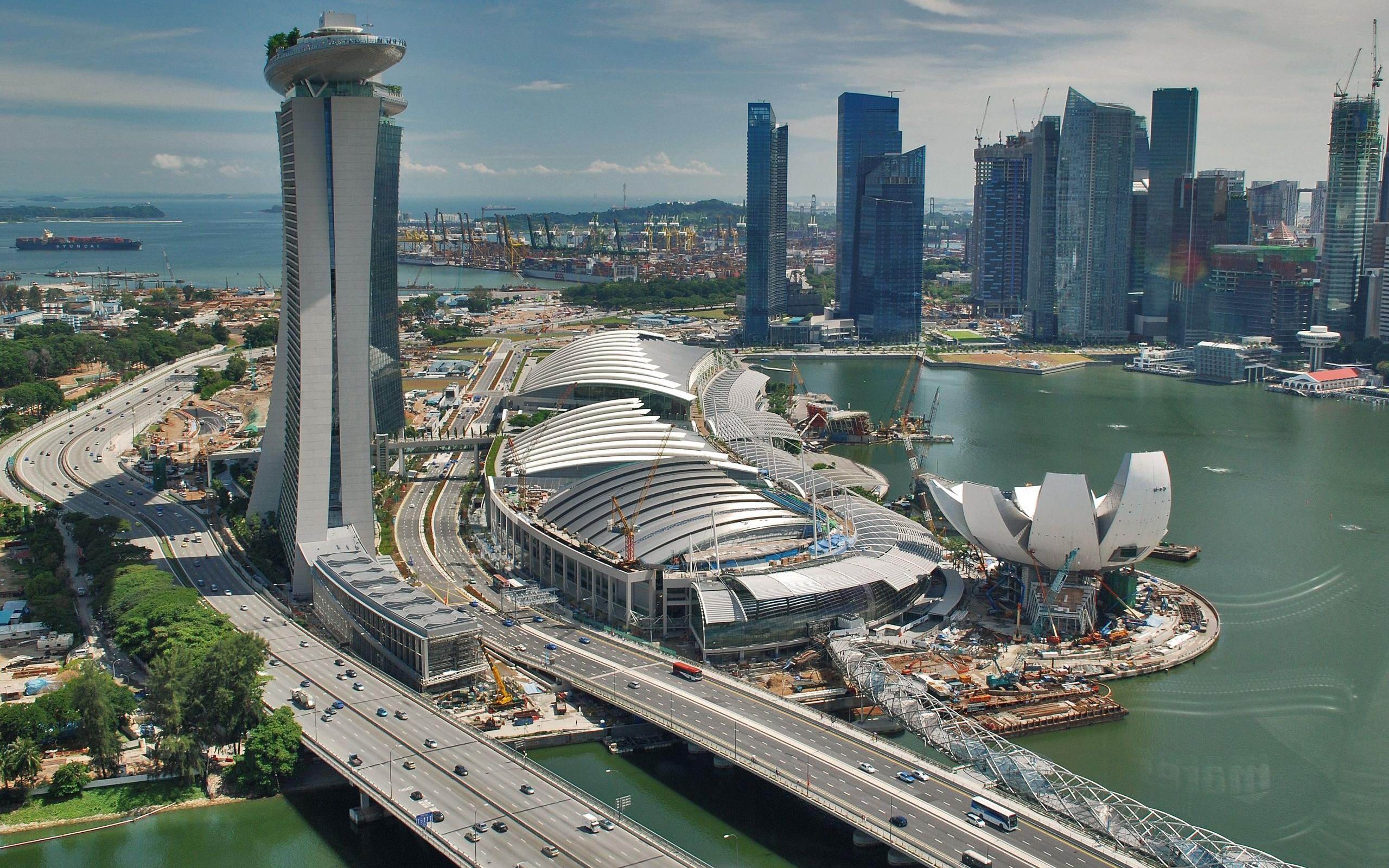
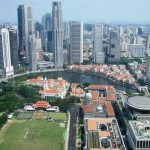
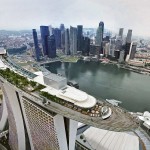
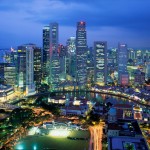
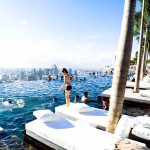
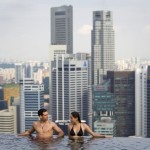
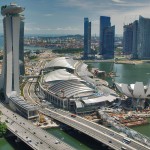
0 Comments